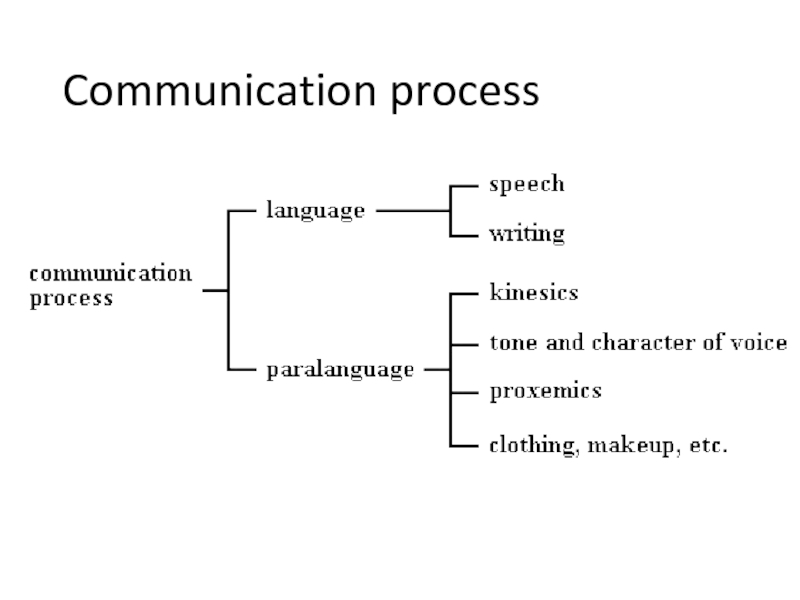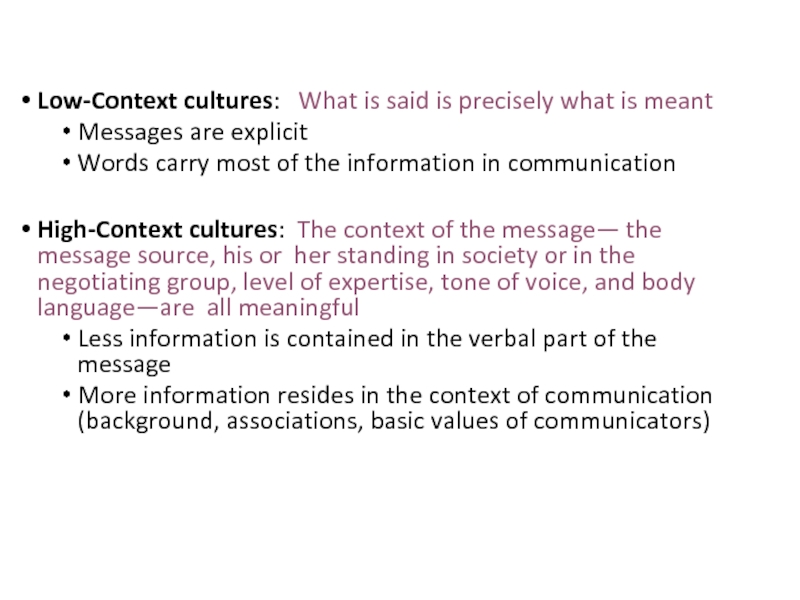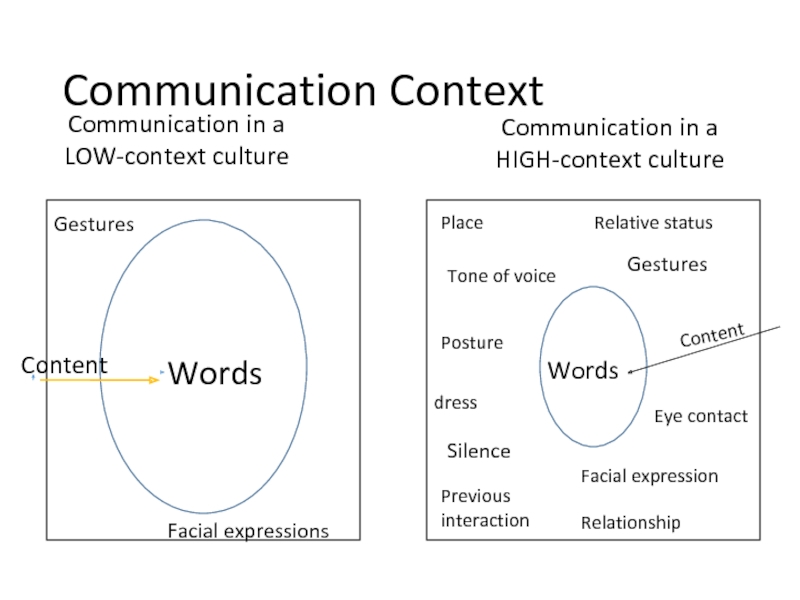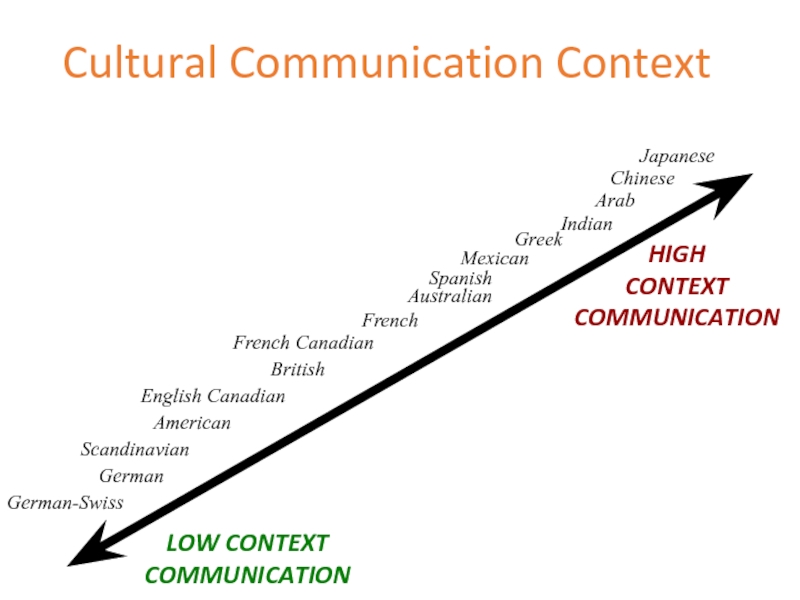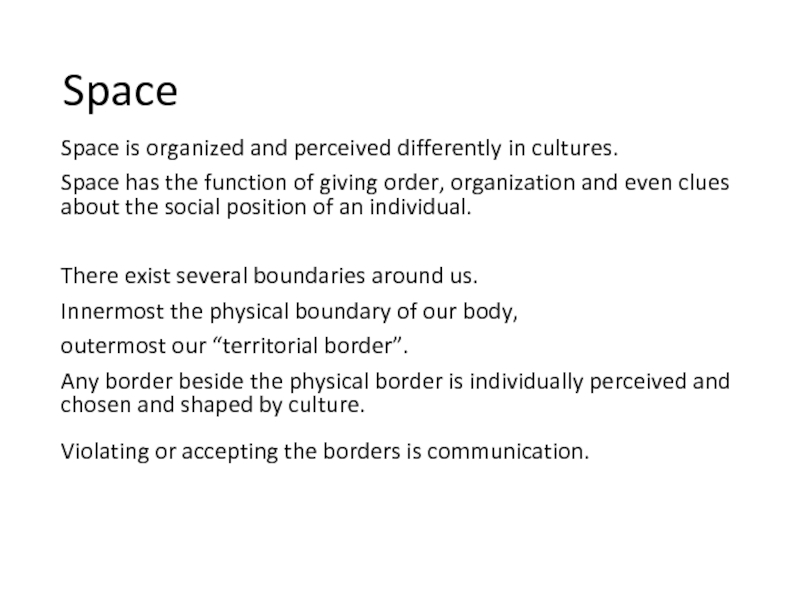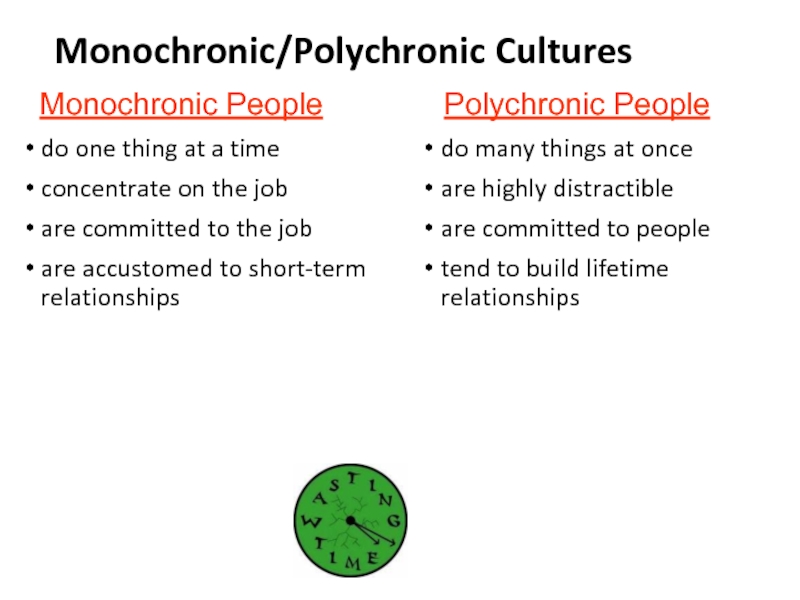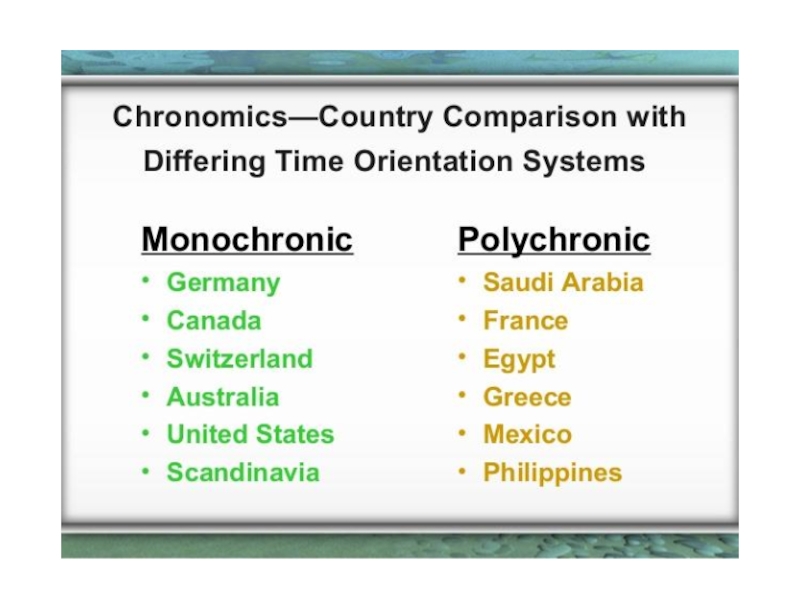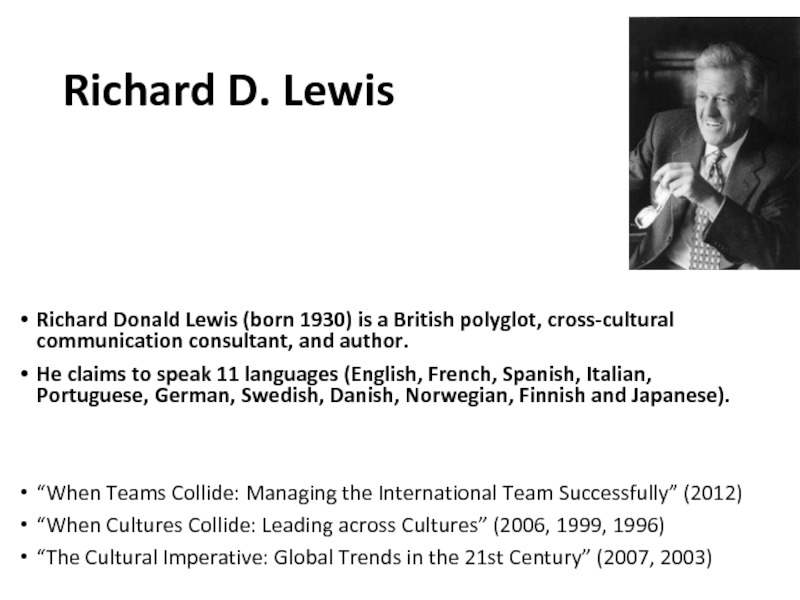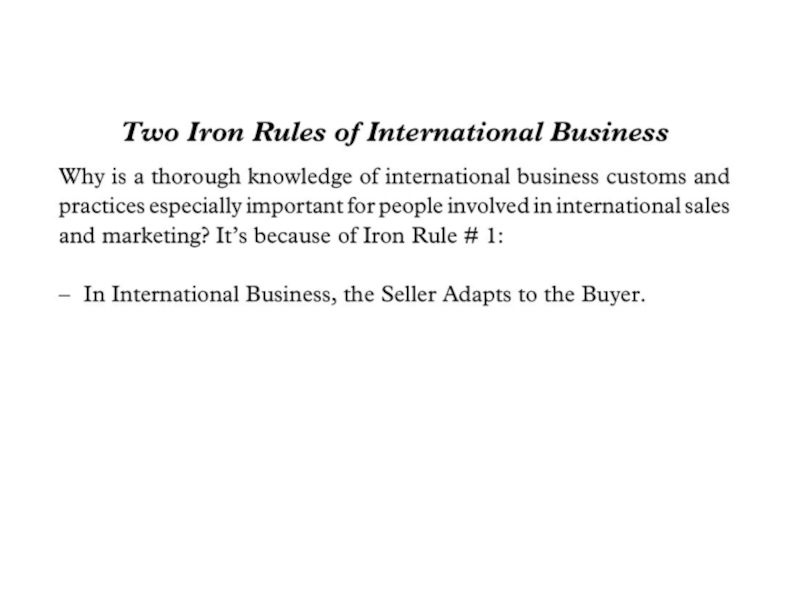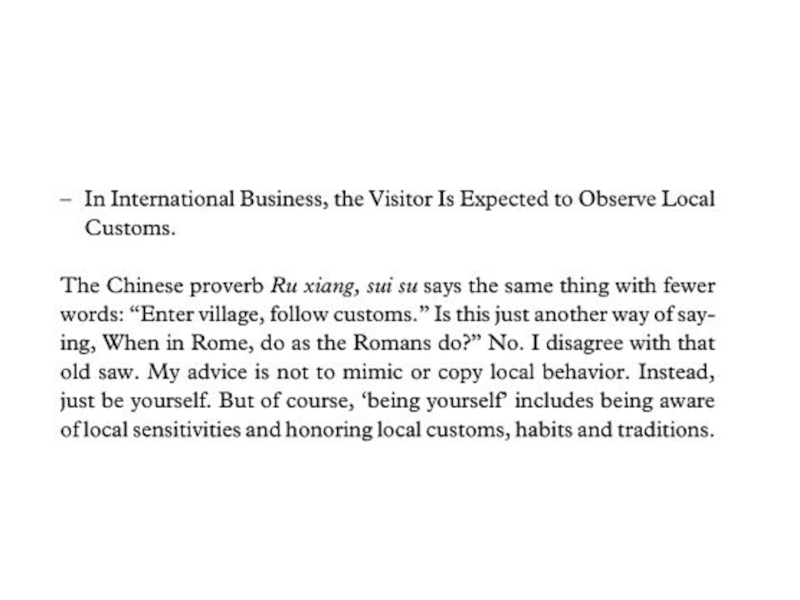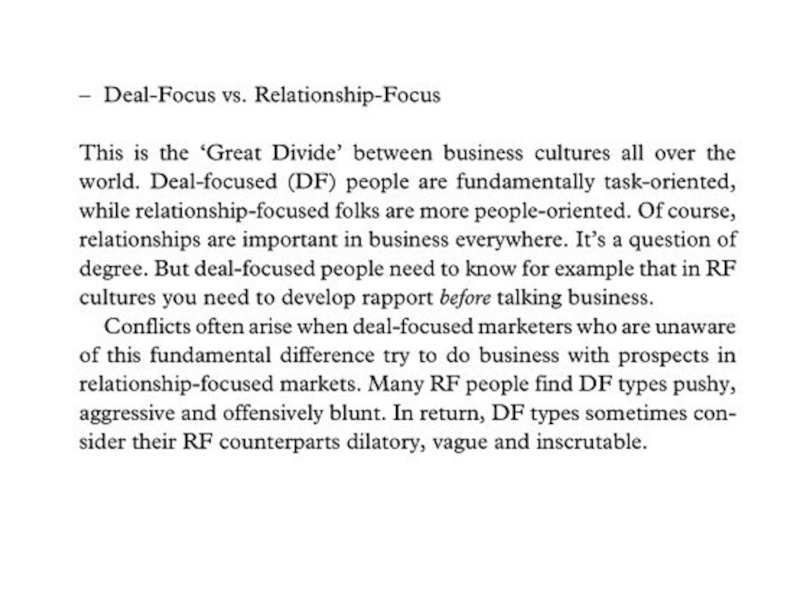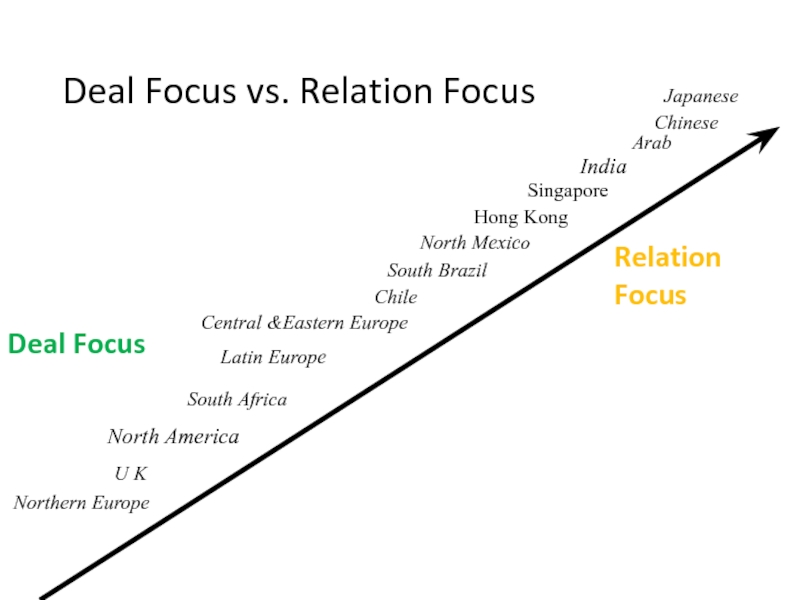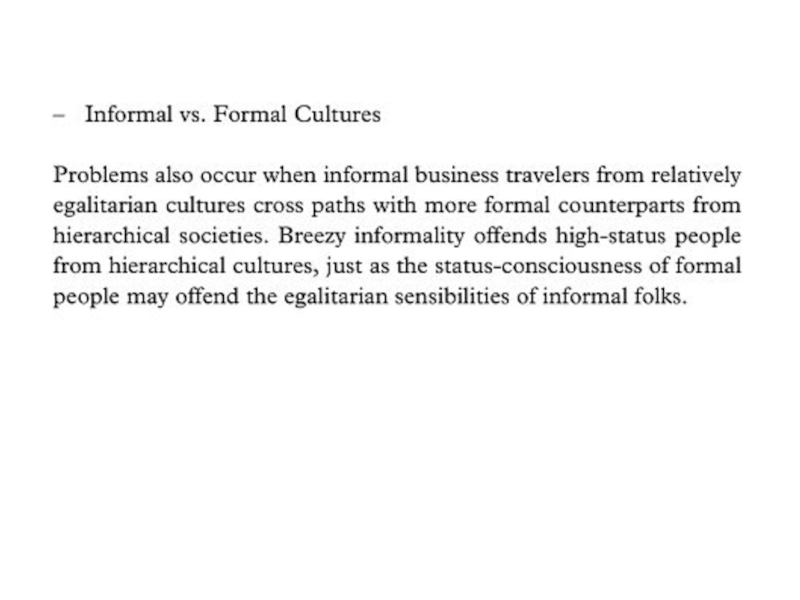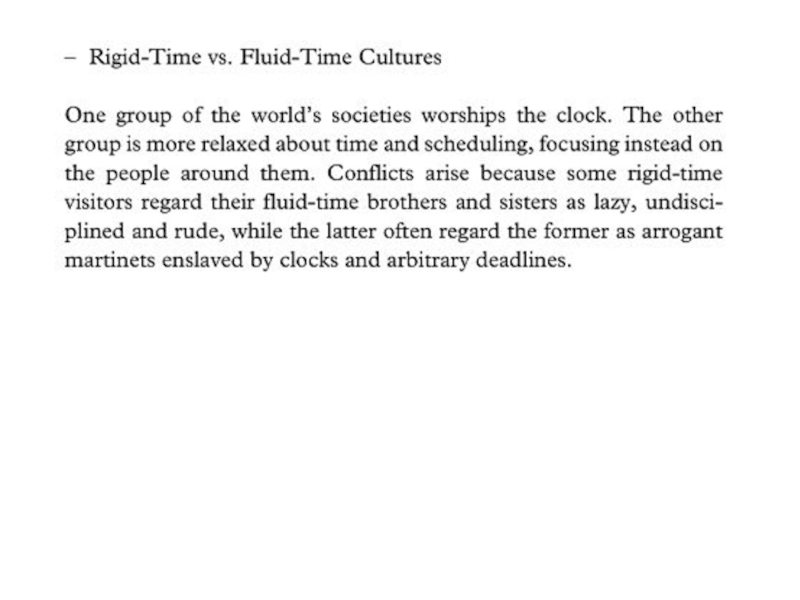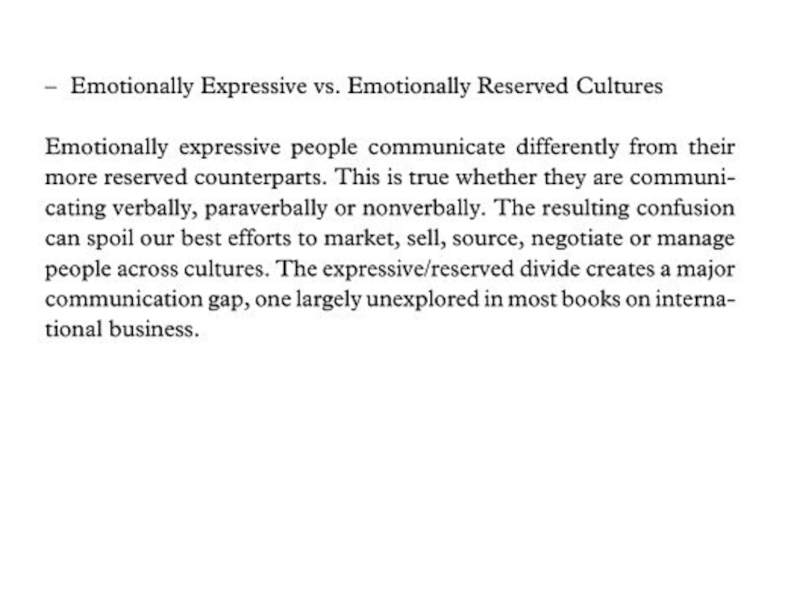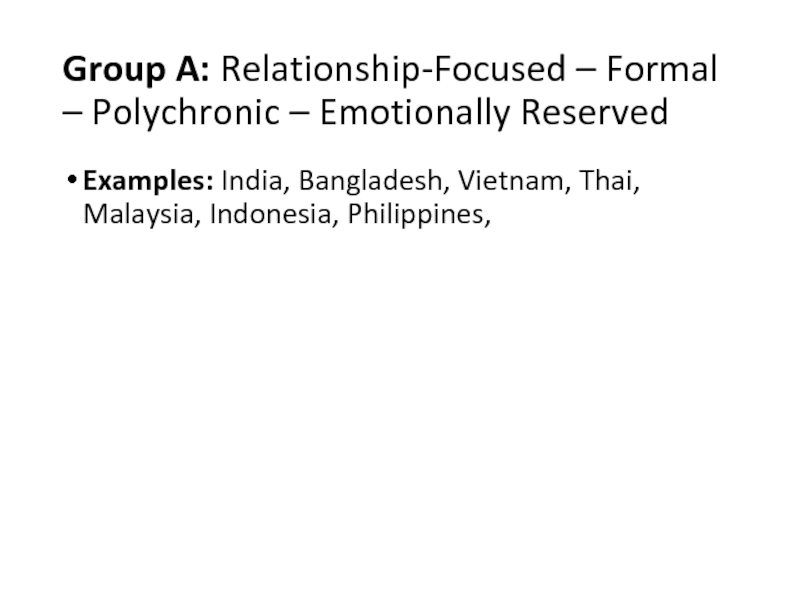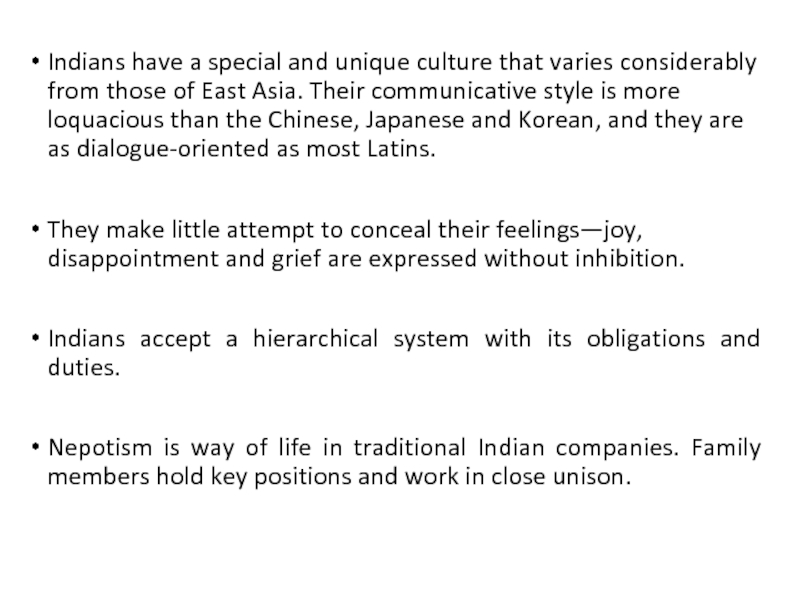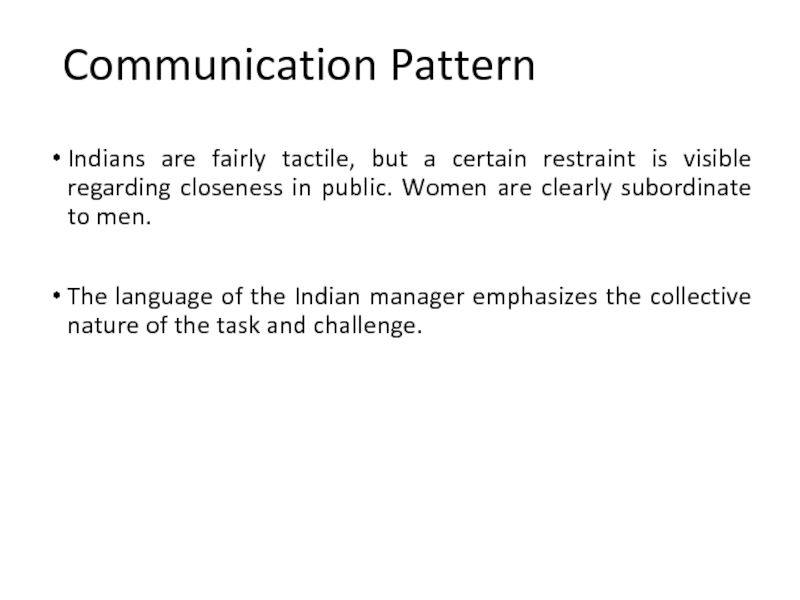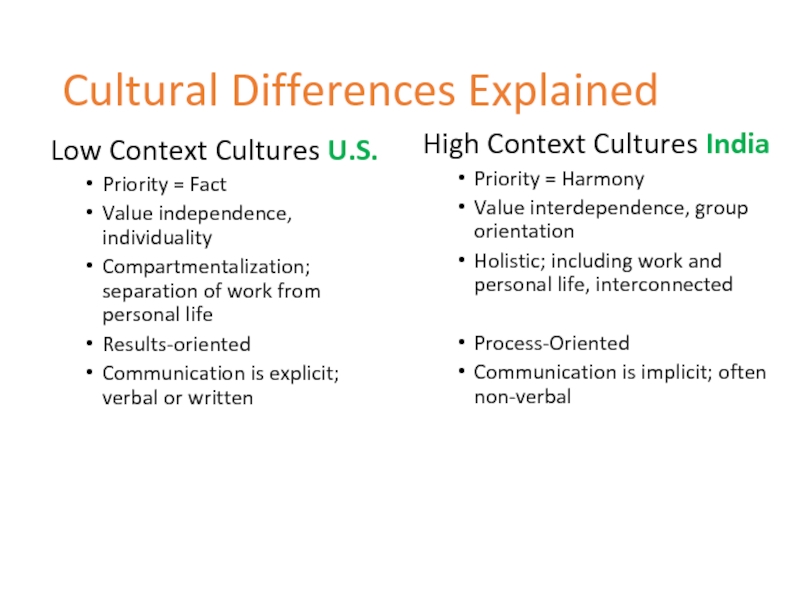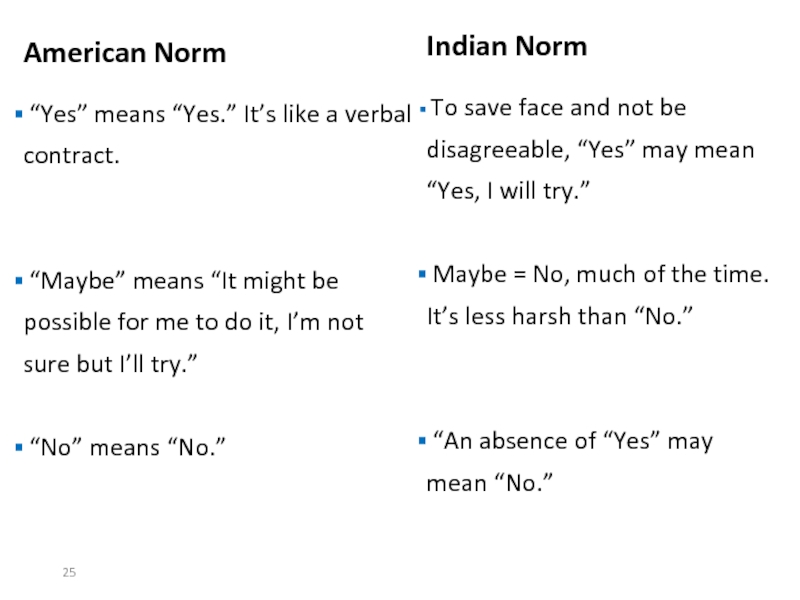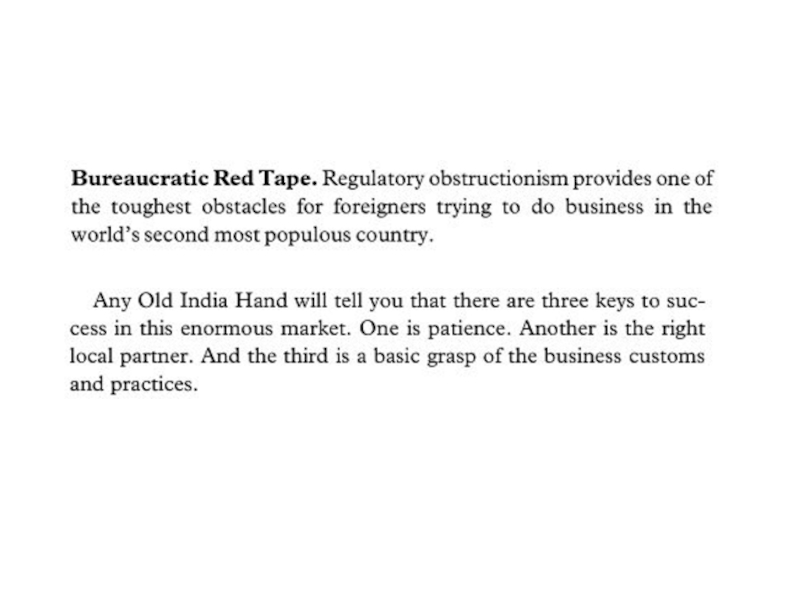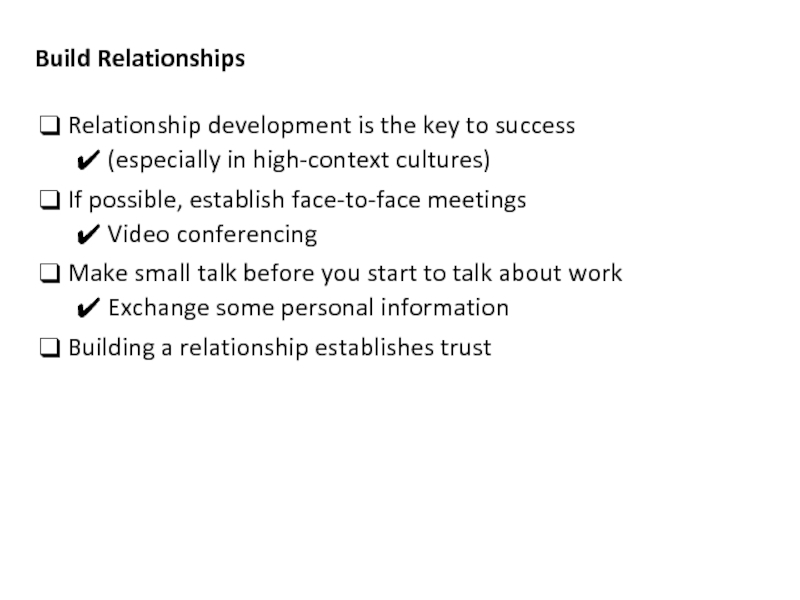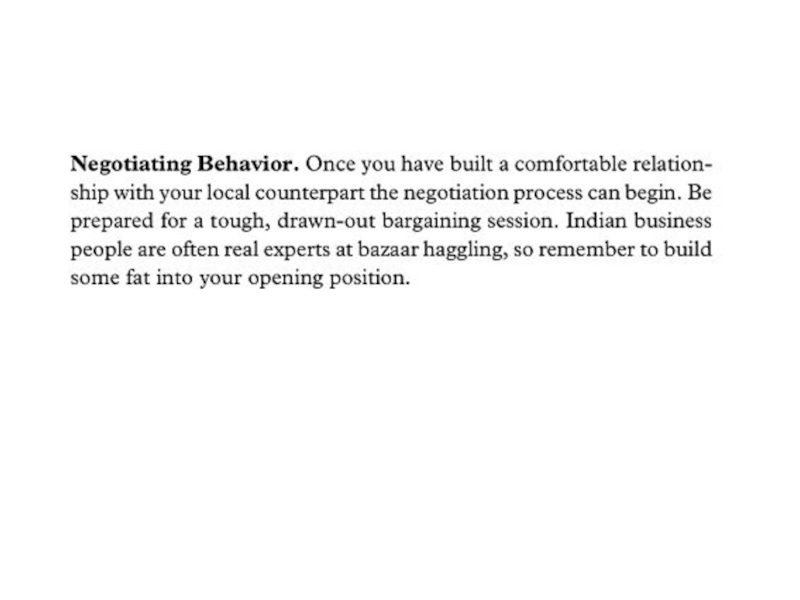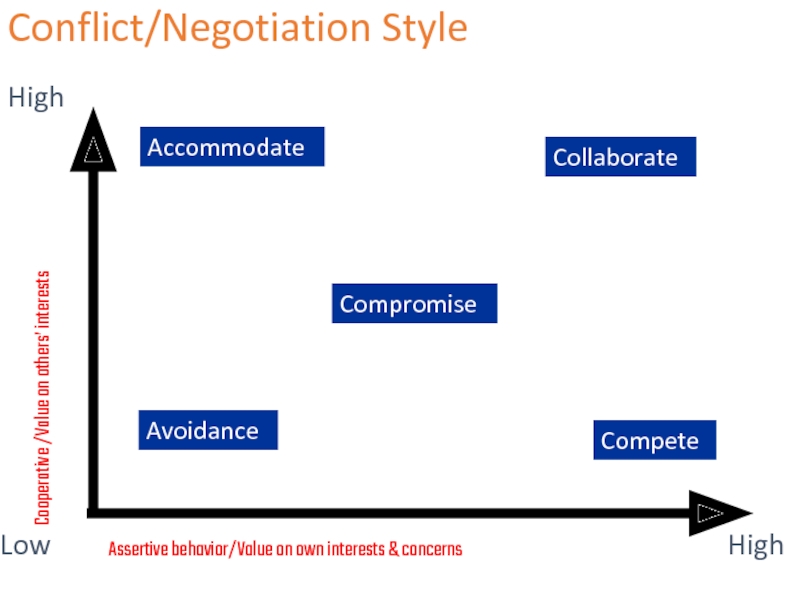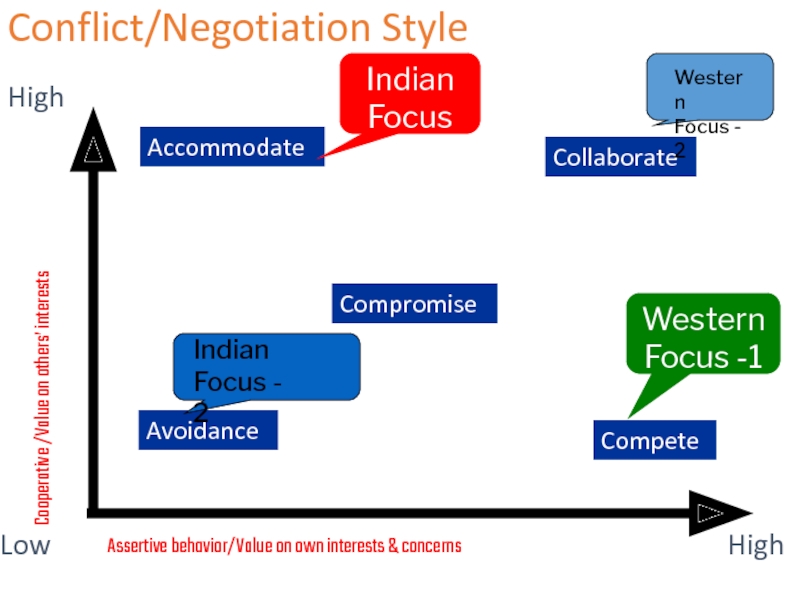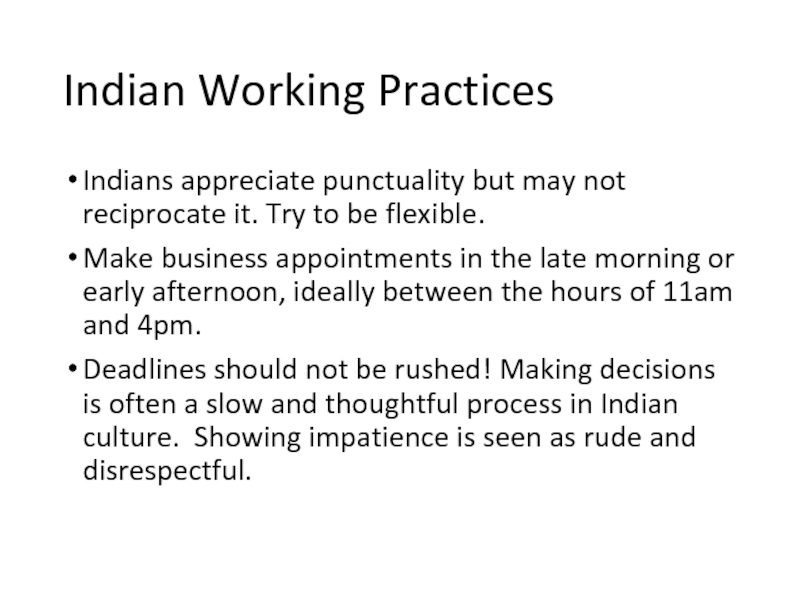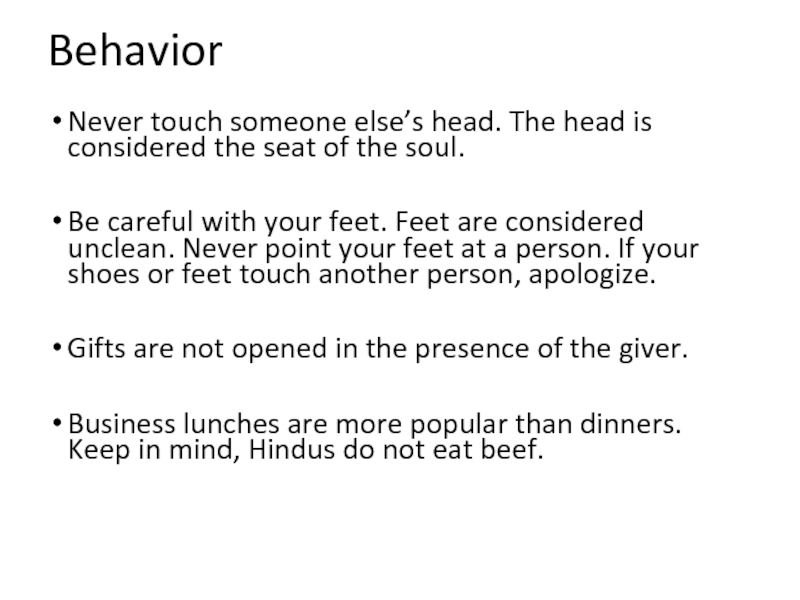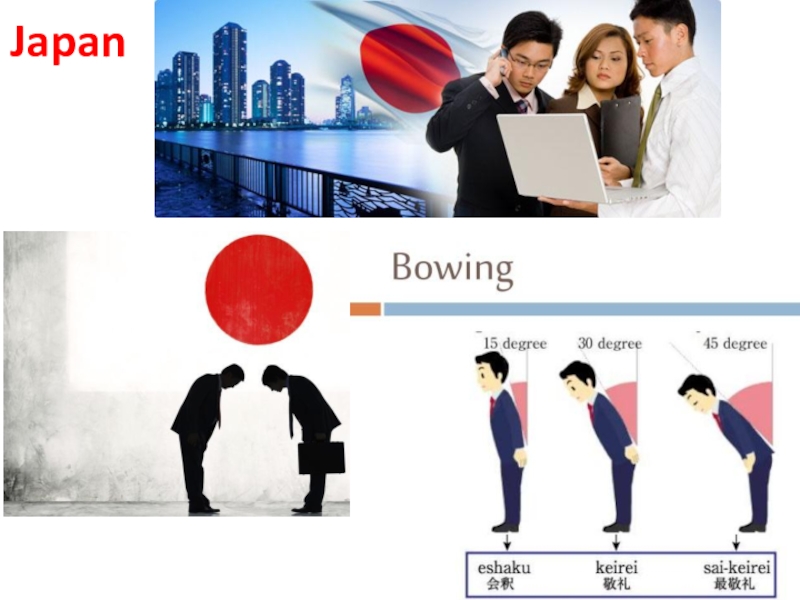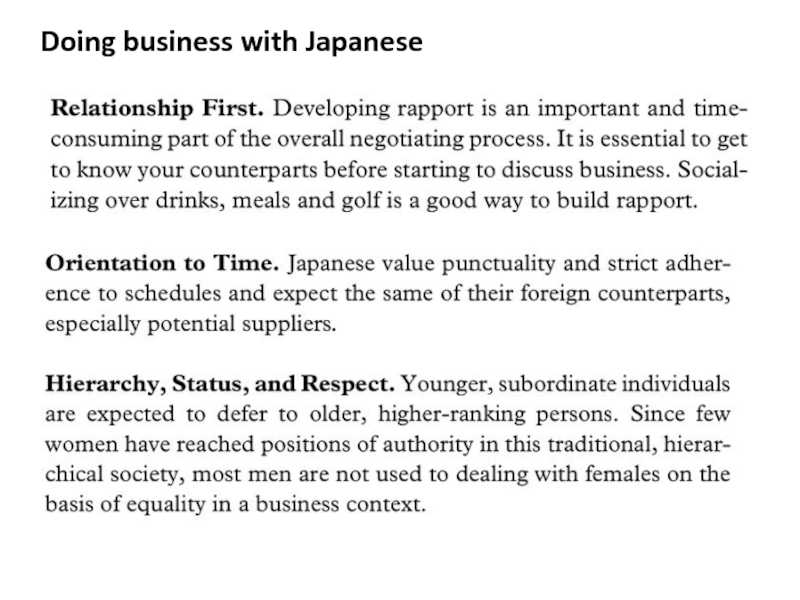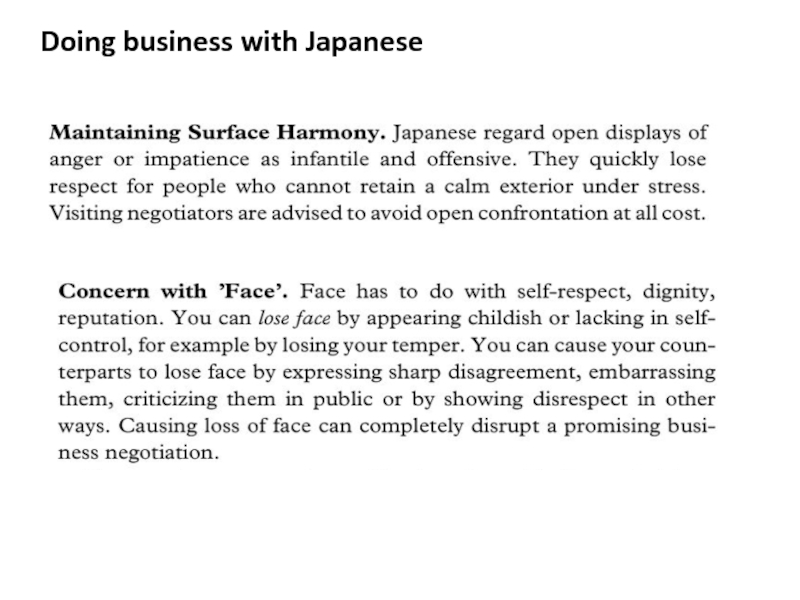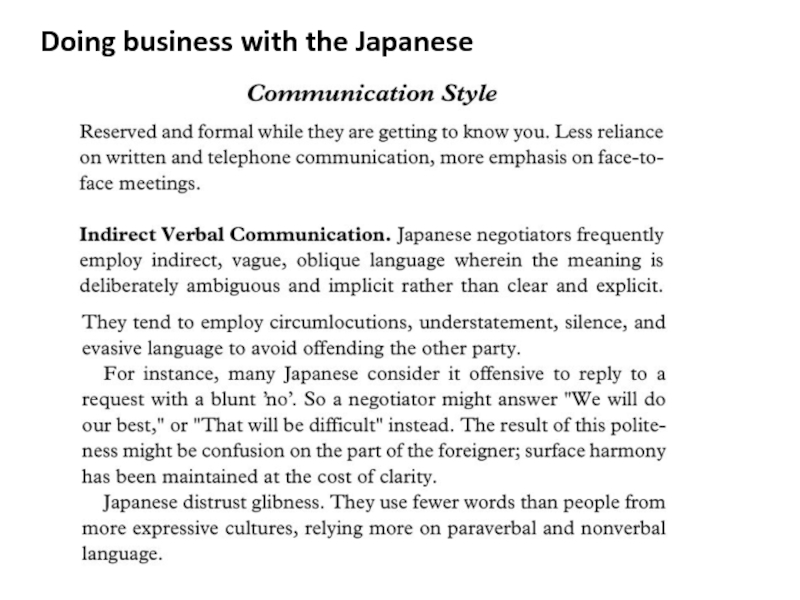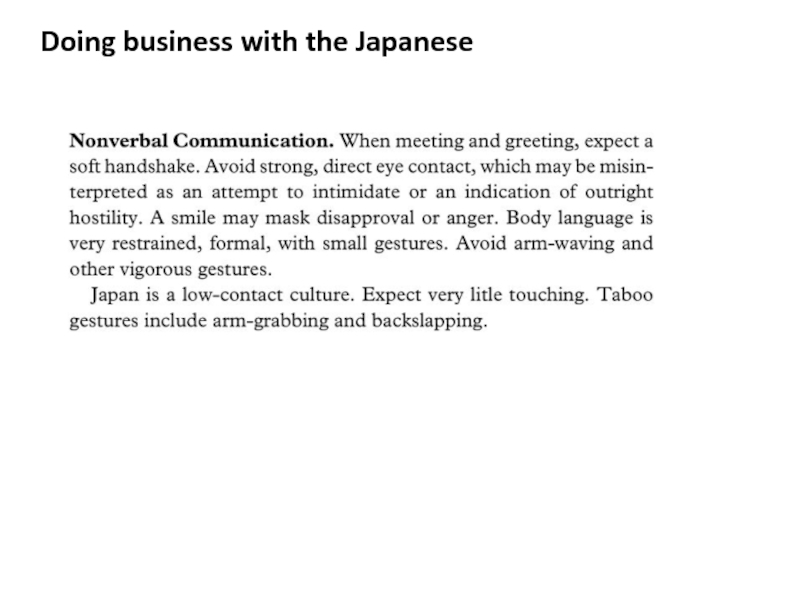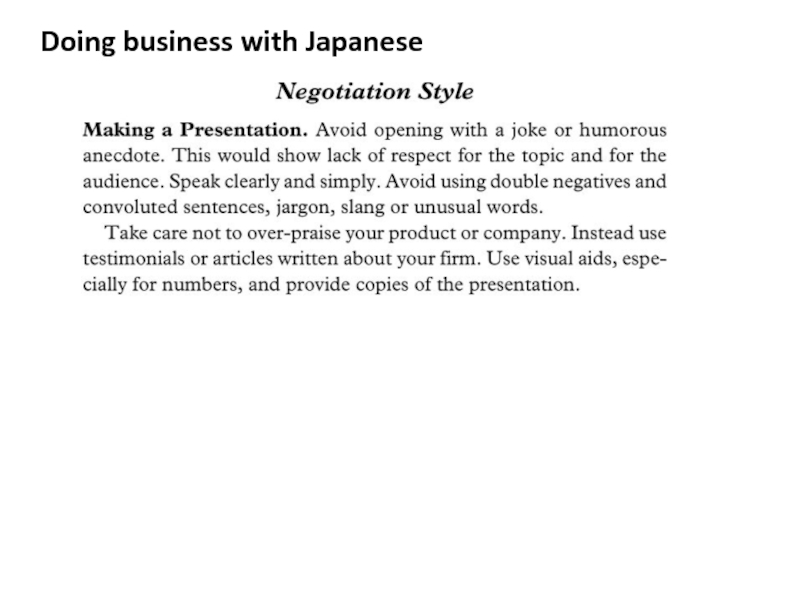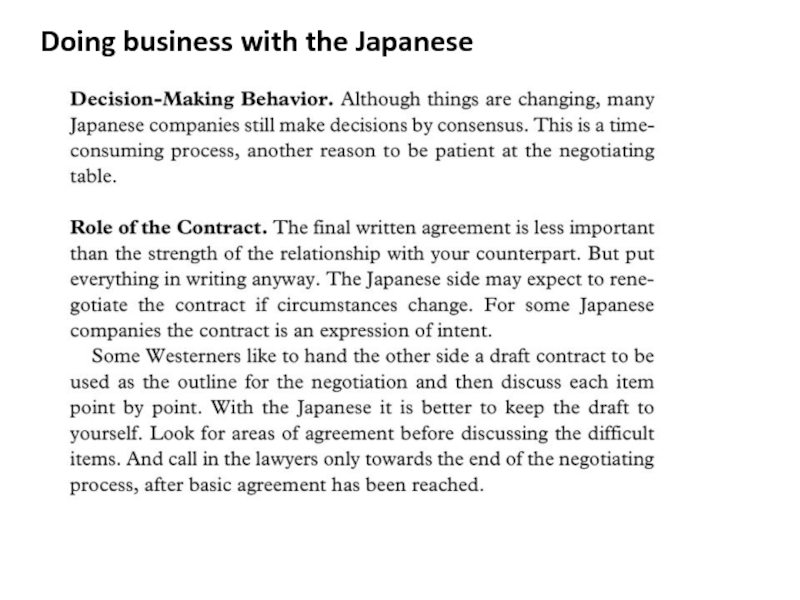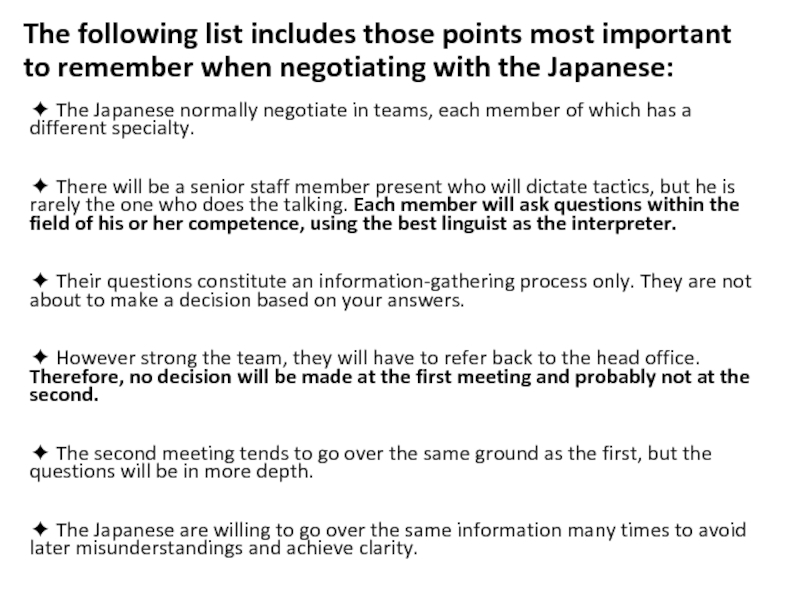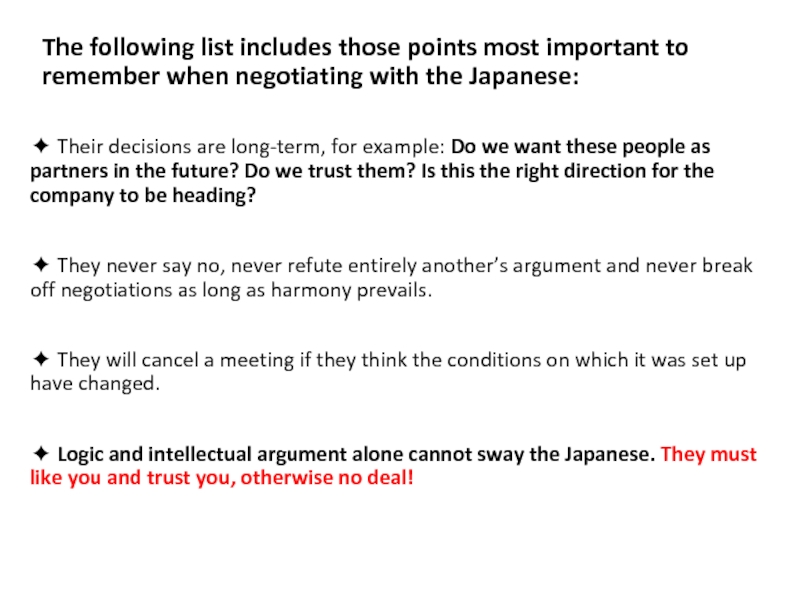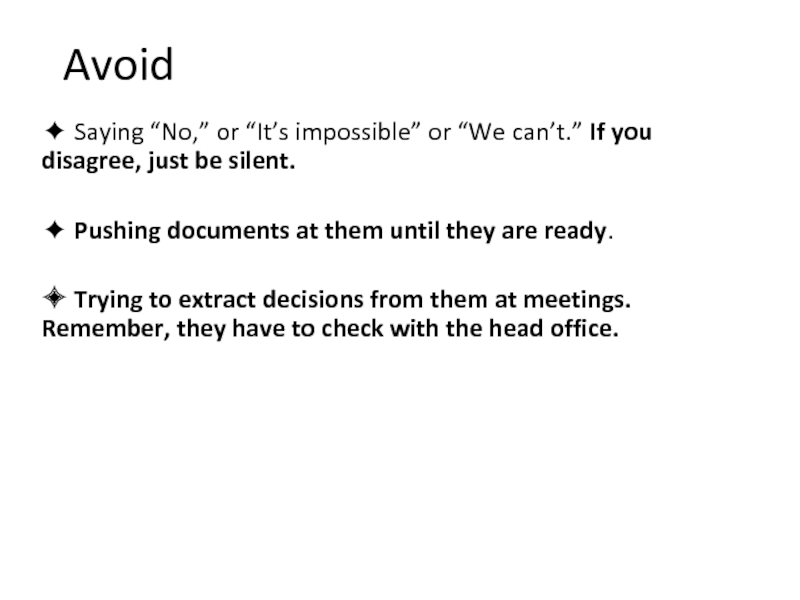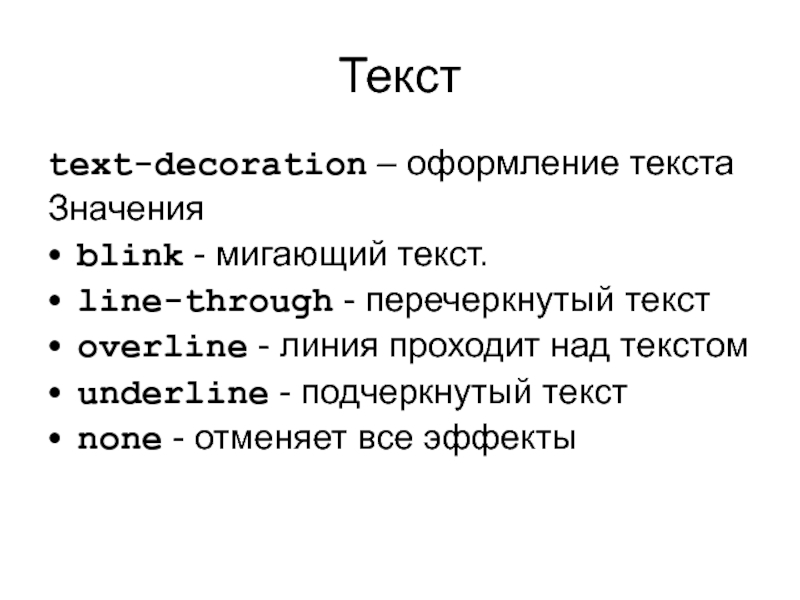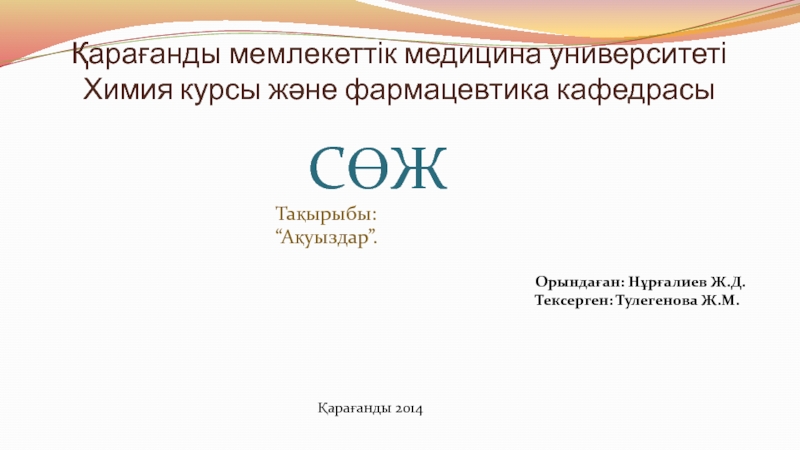Слайд 1
Cross-cultural business behavior
PART 1
Слайд 3High vs. Low Context Cultures
Edward Hall http://edwardthall.com/
Слайд 4Low-Context cultures: What is said is precisely what is
meant
Messages are explicit
Words carry most of the information in
communication
High-Context cultures: The context of the message— the message source, his or her standing in society or in the negotiating group, level of expertise, tone of voice, and body language—are all meaningful
Less information is contained in the verbal part of the message
More information resides in the context of communication (background, associations, basic values of communicators)
Слайд 5Communication Context
Communication in a
LOW-context culture
Communication in a
HIGH-context culture
Words
Words
Content
Gestures
Facial
expressions
Content
Place
Tone of voice
Facial expression
Relationship
Eye contact
Gestures
Relative status
Posture
dress
Silence
Previous interaction
Слайд 6Cultural Communication Context
LOW CONTEXT
COMMUNICATION
HIGH
CONTEXT
COMMUNICATION
German-Swiss
German
Scandinavian
American
English Canadian
British
French Canadian
French
Australian
Spanish
Mexican
Greek
Arab
Chinese
Japanese
Indian
Слайд 7Space
Space is organized and perceived differently in cultures.
Space has the
function of giving order, organization and even clues about the
social position of an individual.
There exist several boundaries around us.
Innermost the physical boundary of our body,
outermost our “territorial border”.
Any border beside the physical border is individually perceived and chosen and shaped by culture.
Violating or accepting the borders is communication.
Слайд 8Monochronic/Polychronic Cultures
do one thing at a time
concentrate on the job
are
committed to the job
are accustomed to short-term relationships
do many things
at once
are highly distractible
are committed to people
tend to build lifetime relationships
Monochronic People Polychronic People
Слайд 10Richard D. Lewis
Richard Donald Lewis (born 1930) is a British polyglot, cross-cultural communication consultant,
and author.
He claims to speak 11 languages (English, French,
Spanish, Italian, Portuguese, German, Swedish, Danish, Norwegian, Finnish and Japanese).
“When Teams Collide: Managing the International Team Successfully” (2012)
“When Cultures Collide: Leading across Cultures” (2006, 1999, 1996)
“The Cultural Imperative: Global Trends in the 21st Century” (2007, 2003)
Слайд 11Richard R. Gesteland
Author of the Copenhagen Business School Press best-seller Cross-Cultural Business
Behavior (5th edition 2012), cited in Harvard Business Review, with German, Russian, Chinese,
Polish, Lithuanian, Swedish and India editions.
Richard’s articles on international negotiating have appeared in the Asian Wall Street Journal, Chief Executive Asia, Foreign Trade, Purchasing Executives Journal, Singapore Economic Journal, China Online and many other publications.
Слайд 14Patterns of cross-cultural business behavior
Слайд 16Deal Focus vs. Relation Focus
Deal Focus
Relation Focus
North Mexico
Arab
Japanese
India
Northern Europe
Chile
Singapore
Hong
Kong
South Brazil
U K
Central &Eastern Europe
Latin Europe
South Africa
North America
Chinese
Слайд 20Group A: Relationship-Focused – Formal – Polychronic – Emotionally Reserved
Examples: India, Bangladesh, Vietnam, Thai, Malaysia, Indonesia, Philippines,
Слайд 22
Indians have a special and unique culture that varies considerably
from those of East Asia. Their communicative style is more
loquacious than the Chinese, Japanese and Korean, and they are as dialogue-oriented as most Latins.
They make little attempt to conceal their feelings—joy, disappointment and grief are expressed without inhibition.
Indians accept a hierarchical system with its obligations and duties.
Nepotism is way of life in traditional Indian companies. Family members hold key positions and work in close unison.
Слайд 23Communication Pattern
Indians are fairly tactile, but a certain restraint is
visible regarding closeness in public. Women are clearly subordinate to
men.
The language of the Indian manager emphasizes the collective nature of the task and challenge.
Слайд 24Cultural Differences Explained
Low Context Cultures U.S.
Priority = Fact
Value independence, individuality
Compartmentalization;
separation of work from personal life
Results-oriented
Communication is explicit; verbal or
written
High Context Cultures India
Priority = Harmony
Value interdependence, group orientation
Holistic; including work and personal life, interconnected
Process-Oriented
Communication is implicit; often non-verbal
Слайд 25Two Little Words That May Make Big Differences
American Norm
“Yes”
means “Yes.” It’s like a verbal contract.
“Maybe” means “It
might be possible for me to do it, I’m not sure but I’ll try.”
“No” means “No.”
Indian Norm
To save face and not be disagreeable, “Yes” may mean “Yes, I will try.”
Maybe = No, much of the time. It’s less harsh than “No.”
“An absence of “Yes” may mean “No.”
Слайд 27Build Relationships
Relationship development is the key to success
(especially in
high-context cultures)
If possible, establish face-to-face meetings
Video conferencing
Make small talk before
you start to talk about work
Exchange some personal information
Building a relationship establishes trust
Слайд 29Conflict/Negotiation Style
Assertive behavior/Value on own interests & concerns
Cooperative /Value on
others’ interests
Low
High
High
Avoidance
Compete
Compromise
Accommodate
Collaborate
Слайд 30Conflict/Negotiation Style
Assertive behavior/Value on own interests & concerns
Cooperative /Value on
others’ interests
Low
High
High
Avoidance
Compete
Compromise
Accommodate
Collaborate
Indian Focus -1
Western Focus -1
Слайд 31Indian Working Practices
Indians appreciate punctuality but may not reciprocate it.
Try to be flexible.
Make business appointments in the late morning
or early afternoon, ideally between the hours of 11am and 4pm.
Deadlines should not be rushed! Making decisions is often a slow and thoughtful process in Indian culture. Showing impatience is seen as rude and disrespectful.
Слайд 32Behavior
Never touch someone else’s head. The head is considered the
seat of the soul.
Be careful with your feet. Feet
are considered unclean. Never point your feet at a person. If your shoes or feet touch another person, apologize.
Gifts are not opened in the presence of the giver.
Business lunches are more popular than dinners. Keep in mind, Hindus do not eat beef.
Слайд 33Group B: Relationship-Focused – Formal – Monochronic – Emotionally Reserved
Examples: Japan, China, Korea, Singapore
Слайд 37Doing business with the Japanese
Слайд 38Doing business with the Japanese
Слайд 40Doing business with the Japanese
Слайд 41The following list includes those points most important to remember
when negotiating with the Japanese:
✦ The Japanese normally negotiate in
teams, each member of which has a different specialty.
✦ There will be a senior staff member present who will dictate tactics, but he is rarely the one who does the talking. Each member will ask questions within the field of his or her competence, using the best linguist as the interpreter.
✦ Their questions constitute an information-gathering process only. They are not about to make a decision based on your answers.
✦ However strong the team, they will have to refer back to the head office. Therefore, no decision will be made at the first meeting and probably not at the second.
✦ The second meeting tends to go over the same ground as the first, but the questions will be in more depth.
✦ The Japanese are willing to go over the same information many times to avoid later misunderstandings and achieve clarity.
Слайд 42The following list includes those points most important to remember
when negotiating with the Japanese:
✦ Their decisions are long-term, for
example: Do we want these people as partners in the future? Do we trust them? Is this the right direction for the company to be heading?
✦ They never say no, never refute entirely another’s argument and never break off negotiations as long as harmony prevails.
✦ They will cancel a meeting if they think the conditions on which it was set up have changed.
✦ Logic and intellectual argument alone cannot sway the Japanese. They must like you and trust you, otherwise no deal!
Слайд 43Avoid
✦ Saying “No,” or “It’s impossible” or “We can’t.” If
you disagree, just be silent.
✦ Pushing documents at them until
they are ready.
✦ Trying to extract decisions from them at meetings. Remember, they have to check with the head office.

